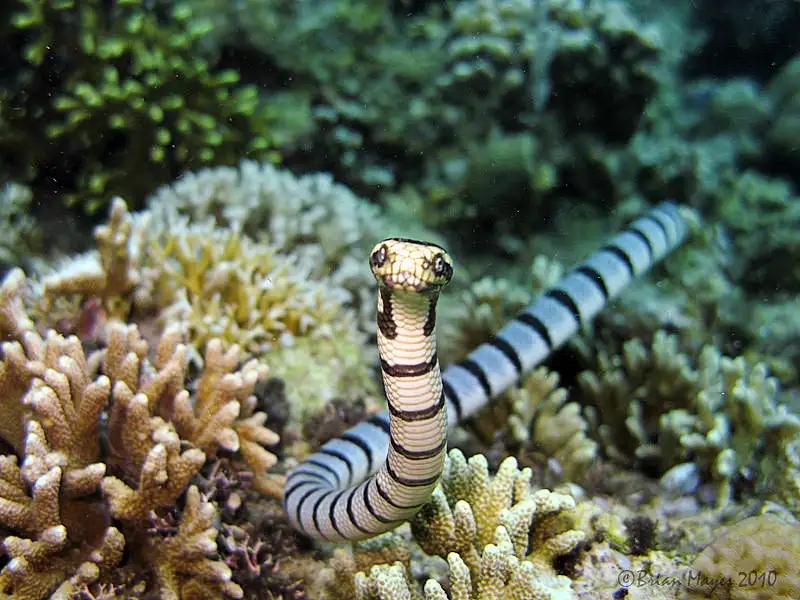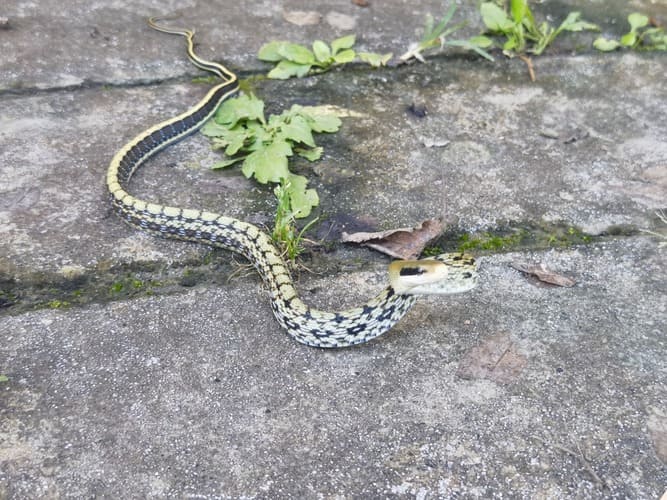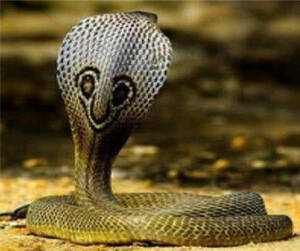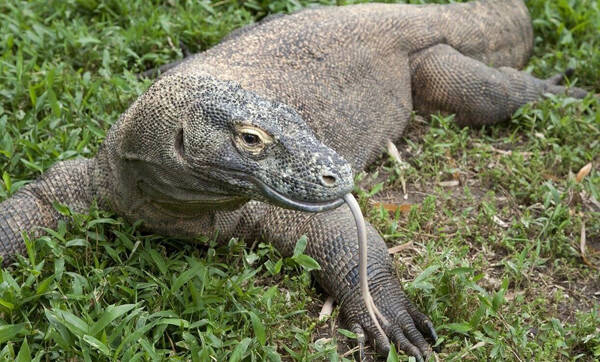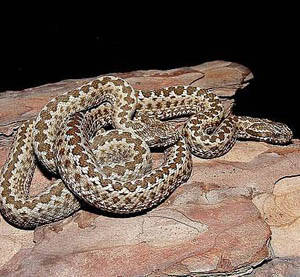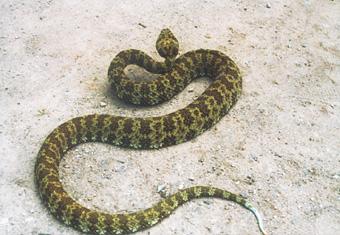Laticauda colubrina
IUCN
LCBasic Information
Scientific classification
- name:Laticauda colubrina
- Scientific Name:Laticauda colubrina,Gray sea snake, fire snake, gray-blue flat-tailed sea snake
- Outline:Squamata
- Family:Elapidae G.Cobra
Vital signs
- length:75-360cm
- Weight:600-1800g
- lifetime:About 20 years
Feature
In water, it uses its paddle-like tail to move back and forth to propel itself forward.
Distribution and Habitat
The gray-blue flat-tailed sea snake has a wide distribution range, along the coast of eastern India and the Andaman Islands, eastward through Malaysia and Indonesia, and northward to Vietnam and southern China, Taiwan, China, and the Ryukyu Islands of Japan. Its main distribution countries are American Samoa, Cambodia, China, Fiji, Indian Andaman and Nicobar Islands, Indonesia, Japan, Malaysia, Micronesia, Myanmar, Palau, Papua New Guinea, Philippines, Samoa, Singapore, Solomon Islands, Sri Lanka, Thailand, Tonga, Vanuatu, Vietnam.
In China, it is mainly distributed in Shandong, Jiangsu, Zhejiang, Fujian, Guangdong, Guangxi, Hainan Island and Taiwan.
The gray-blue flat-tailed sea snake lives in seas and coastal waters under the influence of warm tropical climates, including coral islands, coral reefs, mangroves, etc. It often appears in small cracks or under rocks on the shores of small islands and in shallow waters with a depth of 0 to 10 meters.
Appearance
The body length of the gray-blue flat-tailed sea snake is 75 to 360 cm, with an average of 125 cm, and the weight is 600 to 1800 grams. Females are larger and heavier than males. The head is large, with no obvious distinction between the head and neck, and the body is cylindrical. The back is blue-gray, the belly is gray-yellow, and the whole body has blue-black rings. The head is blue-black, and the gray-yellow color extends from the snout to the upper lip to the temporal part. The nostrils are lateral, with a pair of internasal scales; a small pentagonal scale is embedded between the frontal scales; there is one preorbital scale and two postorbital scales; there are 1 to 3 temporal scales; there are 7 or 8 upper lip scales, 2-2-3 or 2-2-4; there are 2 pairs of chin plates, which are narrower, and the rear chin plate is larger than the front chin plate; there is a small scale between the front chin plate and the first pair of lower lip scales; from the second lower lip scale, there ar
Details
The gray-blue flat-tailed sea snake, whose Latin name is Laticauda colubrina, belongs to the genus Laticauda of the family Elapidae.
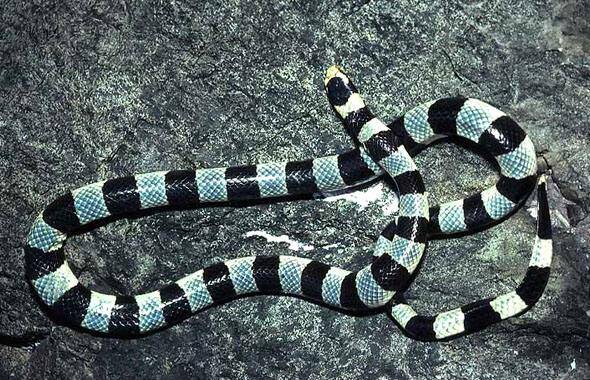
The blue-grey flat-tailed sea snake is a good swimmer and spends most of its time in the ocean, but it also spends 25 to 50% of its time on land to mate, lay eggs, digest food and shed its skin. In water, it uses its paddle-like tail to move back and forth to propel itself forward; on hard surfaces, it adopts a typical snake-like movement; when it encounters a loose substrate, such as dry sand, it will "wind sideways" like a desert snake. This species is mainly active at night or at dusk, and will periodically alternate from the shadow to the sun to regulate temperature. It has the ability to climb trees and has a tendency to move toward light. It locates and identifies prey by smell and feeds on small fish. Males mainly prey on moray eels, while females mainly prey on moray eels.
The gray-blue flat-tailed sea snake is an oviparous snake. Female snakes lay eggs among the rocks on the coast every year, and can lay about 4 to 20 eggs each time. The breeding cycle varies depending on the geographical location. For example, populations in places such as the Philippines can reproduce all year round, while populations in places such as Fiji and Sabah have seasonal reproduction characteristics, mainly concentrated in the three months from September to December. Female snakelets reach sexual maturity in 1.5 to 2.5 years, while male snakelets only need 1.5 years to reach sexual maturity
Listed in the 2010 IUCN Red List of Threatened Species, ver 3.1 - Least Concern (LC)
Listed in the List of Terrestrial Wildlife with Beneficial or Important Economic and Scientific Research Values under State Protection issued and implemented by the State Forestry Administration of China on August 1, 2000.
Listed in the second level of the List of National Key Protected Wildlife in China.
Protect wild animals and stop eating game.
Maintaining ecological balance is everyone's responsibility!

